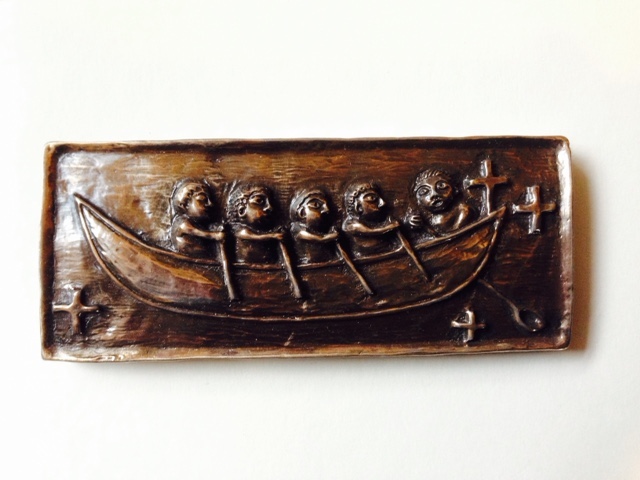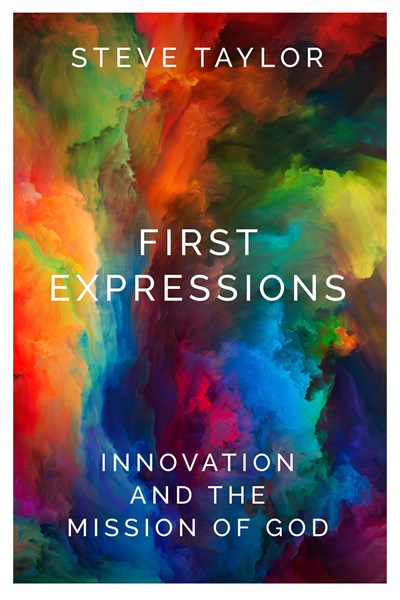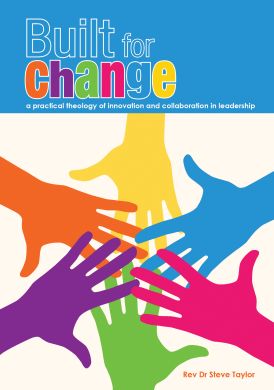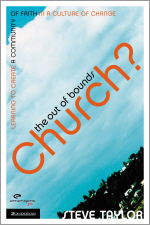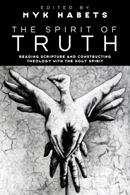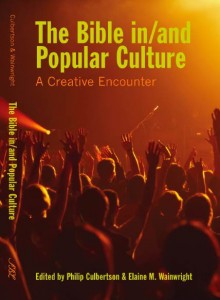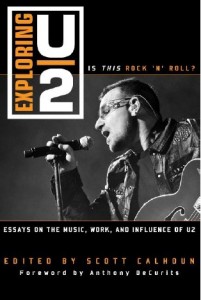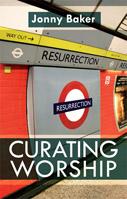Tuesday, October 02, 2012
the politics of Christian influence: Christianity and colonisation
James Boyce’s 1835
explores the Founding of Melbourne and in doing so, the conquest of Australia. Such books are essential reading for all those who care about mission and the witness of the church, because they allow us to reflect on the past.
Chapter 5: London 1835 includes a summary of the place of Evangelical Christianity in colonisation. “With the assistance of their …. [evangelicals] …. the British government became focused on the physical and moral welfare of indigenous people to an extent unknown before, or for the most part, since.” (37)
First, it helpfully notes that British Evangelicalism of the early 1800s should not be confused with present day American Evangelicalism.
Second, it notes the motivation. Once Slavery was abolished, indigenous welfare became a priority area of Evangelical concern. “Government control, along with support for enterprising ‘respectable’ settlers, was urgently needed to counteract the harm done to natives by lower-class European.” (38-9) This provides a contrast to the Domination narrative, which is often pinned on Christian colonisers. “The simple fact that evangelicals accepted that people had rights based on prior possession set them apart from the dominant settler discourse, which argued that the right to land arose from using it for farming.” (39)
This produced an ironic tension, that Christians supported colonisation because they saw it as “the primary means of ensuring that Aborigines were not degraded or killed by the lower order of Europeans.” (40)
Third, this advocacy on behalf of indigenous people relied on information. What happened in Melbourne and in the colonising of Australia, was that distance and lack of missionaries on the ground, meant that the Christian politicians lacked data to work for justice.
It’s a fascinating narrative about the relationship between church and society and the attempt to use politics for influence.
(New Zealand readers will want to read Chapter 7 – The Treaty, as it provides a fascinating analysis of a Treaty signing, both the politics and the processes, just a few short years before the signing of the Treaty of Waitangi. But that is for another post).
Wednesday, June 20, 2012
Finding words for worship
I’ve been asked to provide a call to worship at the Church Synod on Friday evening. My general rule of thumb is to work with what’s engaging me. Last week I posted this,
Which, with a bit of research, over the weekend I have shaped into the following Call to worship –
Leader: The cross,
offering reconciliation, making enemies friends,
All: May we, reconciled and reconciling, feel again Your call to mercy
Leader: The greenstone,
an item of treasure and value in Maori culture
All: May we, Your treasures in earthen clay, hear afresh Your call to value each other
Leader: The fishhook, carved in reference to Jesus invitation,
Come follow me: I will make you fishers of people
All: May we, Your fisher folk, experience anew Your call to mission
Leader: The fishhook, a pattern commonly carved in Maori culture
a symbol for a journey, speaking of the need for shared courage, wise leadership and safety in troubled times
All: May we, Your pilgrim people, find together new courage, wise leadership and surprising joy,
Leader: In our shared journey, Shaped always by this cross of Christ. Amen
Wednesday, June 13, 2012
a contextual visual for mission 2
Other visual theologies of mission here and here.
Carved by James Tapiata for St Georges Anglican Church at Gate Pa. Used by permission. Not to be used in any form without permission from St Georges.
The greenstone Maori fish hook is entwined around the cross, to remember Christ’s mission as a fisher of people and to show the ties between two people – Maori and Pakeha. Greenstone is of immense importance in Maori culture, both spiritually and historically. Although not stated on the church website, the fish hook is likely to reference “Hei-Matau”, a common Maori carving pattern, in which fishing was simply a way of gathering food. In this context, it would symbolise prosperity, determination, leadership and good health, as well as safe journey over water.
Sunday, April 29, 2012
Amazing news. Go Justin. Go the Anglicans
Amazing news. Justin Duckworth, dreadlocked, 44 years olds, pioneer urban missionary for last 25 years, in recent years reforming that around new monasticism (story told with his wife, Jenny, in Against the Tide, Towards the Kingdom (New Monastic Library)) – has just been appointed Anglican Bishop of the Diocese of Wellington.
I remember attending an emerging church hui (gathering) in Wellington in 2005. At that time, some were dismissing the mainline church as dead. Others of us weren’t convinced. Theologically, we wanted to retain an openness to the God of surprise. It’s well expressed in the words of one of New Zealand’s best poets, James K. Baxter.
Lord, Holy Spirit, You blow like the wind
In a thousand paddocks, Inside and outside the fences
That sense that God can work inside and outside the church, in forms new and old. Justin was there, deeply involved in mission amongst the underprivileged and justice workshops. Now a Bishop! It’s moments like these that confirm those instincts, the joy of following a God of surprise, the celebration at the courage of the Diocese of Wellington.
I’ve written about Urban Vision as part of a chapter on the emerging church in New Zealand. Its in a book, edited by Ryan Bolger, that showcases a global emerging church, in continental Europe, Asia, and Latin American and in African American hip-hop culture. Titled: Gospel after Christendom, The: New Voices, New Cultures, New Expressions, it’s due out in October, and I hope that, given this news, they don’t mind if I post some excerpts. Under the heading “Mission.” I begin with another quote from James K Baxter.
Lord Holy Spirit, Heaven is with us when you are with us,
You are singing your songs in the hearts of the poor
Followed by:
Urban Vision began in 1996 as a group of people committed to serve the innercity of Wellington, through acts of Incarnational mission. Its origins were in a shared set of friendship, a suburb (Berhampore) and a commitment to quietly follow Christ among the poor and marginalised.
An important ministry feature was “the Castle”, an intentional community where people from the street could experience belonging and equality. There was also a willingness from individuals to deliberately relocate into public housing areas in order to support refugees and migrants.
Over the years, Urban Vision has morphed and grown in strength and outreach. It has seeded teams into other urban poor and marginalized suburbs around Wellington. Then in 2007, Urban Vision decided to reform itself as a contemporary independent Order, centered around a set of shared values. These include
• a prophetic call to seek justice
• a willingness to be sent as Good News
• an action/reflection spirituality
• a commitment to simple lifestyle and
• discipleship formation.
To quote from their website “we’re not simply copying something from the past … [Rather] … this similarity to the old missionary movements has come about because of the contexts we live, because of the times we live in and the prevailing culture of society and the church at this point of history in Aotearoa/New Zealand.”This commitment to radical discipleship, along with their durability over a decade, are a fine example of experimental emerging praxis, of giving concrete expression to the Wind of the Spirit who yearns to whisper God’s “songs in the hearts of the poor.”
Here’s an interview with the Bishop-elect!
And here’s a fuller written article on Justin, Urban Vision and new monasticism here.
Monday, February 06, 2012
Daily prayer for Waitangi Day
Today I was leading our 20 minute daily prayer service here at Uniting College. Being Waitangi Day in New Zealand, a day to reflect upon the Treaty of Waitangi and it’s implications for today, I decided I would name some of my cultural heritage and make it a basis for our daily prayer. (Other worship resources I’ve shaped for Waitangi Day services are summarised here). So last night I DJed a few elements together – something tactile in the shape of a puzzle piece, some Scriptures, a prayer and an active intercessory response. For those interested, here tis (more…)
Saturday, October 22, 2011
Good to come home now and again. Eat some icecreams. Do some bombs.
Mr Frosty and the BMX Kid. Written and directed by Tim McLachlan from New Zealand, this was a finalist in the Your Big Break competition a global search for the next great filmmaker. The task was to capture the spirit of New Zealand in a 3 minute short film.
It’s good to come home now and again aye bro. Eat some ice creams. Do some bombs. You’re never too bro. You’re never too old.
This weekend I am home again, in New Zealand for the 100th anniversary of the church I used to lead. See some friends. Look at some views. Eat some icecreams. Not sure about the bombs, esp given the state of Lake Ellesmere. But definitely watch some rugby!
Sunday, September 11, 2011
mission as creation care in preaching Cain and Abel
I preached at Scots Uniting Church today. The lectionary focus was the season of creation, the lectionary texts included Genesis 4. So an encouragement to explore the relationship between God’s mission and the environment, especially give that in 1984, the Anglican church developed the Five Marks of Mission, one of which includes creation care.
- To proclaim the Good News of the Kingdom
- To teach, baptise and nurture new believers
- To respond to human need by loving service
- To seek to transform unjust structures of society
- To strive to safeguard the integrity of creation and sustain and renew the life of the earth
My application was a reflection on what it means to listen to local landmarks – Victoria Park (Tarndanyangga) and River Torrens (Karra Wirra Parri). A bit too localised to be of interest to blog readers, so I will simply place the first half of the sermon here, in which I begin with some Maori culture, specifically a Maori “mihi”/welcome as a way to understand the Genesis text.
(There wasn’t a single comment on the sermon. Not one! Perhaps you as blog readers might have some). (more…)
Thursday, May 19, 2011
being the people of God in a quakezone
Oxford Baptist Terrace is the central city Baptist church in Christchurch, built in the 1860’s. On February 22, pastoral colleagues and drinking friends were having their weekly team meeting inside the church when the Christchurch earthquake hit. They literally ran for their lives, the church falling around them.
The church will have to be demolished. Here’s some video footage of the recent memorial service, held to mark that end of so many years of ministry in that building, to allow people to grieve and to pray for the future.
I think I will show it tonight in the Reading Cultures class, as we gather around stories of spaces and places used well in mission and ministry.
Friday, May 13, 2011
spaces and places used well in mission
I am looking for examples of spaces and places being used well in mission. I want them by Wednesday 18th May, both a picture and a one paragraph explanation of why you think that space or place is being used well in mission and ministry.
You see my Reading cultures/Sociology for ministry class last night explored the theme of spaces and places. I began by talking about spaces and places of spiritual significance in New Zealand – Waitangi, Maori Jesus at Ohinemutu, Parihaka, Anzac War memorials.
The class then brainstormed Australia and they did some excellent work. I then wrote a statement on the board
spaces and places are not important to Christian ministry
After some work in “yes” and “no” groups, an excellent discussion resulted. Words like creation got used. The Old Testament was scanned – the setting up of altars yet the encouragement to keep on pilgrimage. The ministry and mission of Jesus, in birth, life and resurrection was trawled.
The potential of spaces and places – in time, in place, in buildings, in material elements of bread and wine – became evident. Having indigenous and non-indigenous voices in the class became a great gift as the complexity of contested spaces and places, including colonisation were explored. An excellent night of collaborative learning was had!
As we left, I suggested some practical homework. That during the week, each person take a picture of a space or a place they think is being used well in mission. Email it to me (steve at emergentkiwi dot org dot nz). And we will share them together, as practical examples, as we start our class next week.
So why not join us. Enrich our class with your voice, your location, your example of a space/place you think is being used well in mission and ministry. (And in so doing, you will help reinforce the value of social media, which the class explored 2 weeks ago with Andrew Jones).
In return, after the class, I will then put the entire resource – photos and explanation – back up online as a general mission resource, some 2011 examples of spaces and places being used well in mission and ministry!
Sunday, March 06, 2011
mission in a quakezone
My current vocation in life is to reflect on the shape and nature of the church’s mission. I primarily do that in South Australia, which involves a lot of thinking about appropriate mission in the suburbs of ease and affluence which dot Adelaide.
But my heart remains firmly in Christchurch, in which suburbs that were formerly affluent now lie broken and twisted by nature’s force. What might be the shape and nature of the church’s mission in that city?
The dilemna is that I am now an outsider. I think from afar. So I risk being like the two old men in the Muppet Show, nothing more than a empty voice.
But I also have some space and distance and so perhaps one of the few things I can do is think. So when we discovered that the church we turned up to visit today, which according to their website was open, was actually meeting at another time and somewhere else, I tried to capture some thoughts. (more…)
Sunday, February 06, 2011
creationary: Waitangi Day Resources
For folk in New Zealand, Sunday worship this week falls on the 6th of February, which is also Waitangi Day, a day to reflect upon the signing of the Treaty of Waitangi between Maori and the Queen of England’s representatives in 1840 and the implications for our life as a nation going forward.
For those thinking about the implications for worship, here are some resources that I have created in previous years that might be of some use.
- a daily prayer service (20 minutes) here
- a sermon I preached in 2007, making linkages between Ephesians 2, Jesus and Waitangi Day.
- some worship ideas (here), including an interactive call to worship, a medley of Scriptures and a song suggestion
- a Waitangi day communion liturgy I wrote for Waitangi Day. It is published in Gerard Kelly’s, RetroFuture: Rediscovering Our Roots, Recharting Our Routes
, 178-9.
Female: Waitangi Day
Where Maori and Pakeha wanted to be one
Hoping for security
Dreaming of biculturalismFemale: We who are many are one body
Male: Ka whatiia e tatou tenei taro.Male: Communion,
Where God wants us to be one,
Hoping for restitution,
Dreaming of full and final settlementFemale: We who are many are one body
Male: Ka whatiia e tatou tenei taro.Female: Communion [raise bread]
Take this and eat it. This is my body,
Jesus, broken, that we might be one.Male: Communion [raise cup]
Take this and drink it. This is my blood.
Jesus, broken, that we might be one.Female: We who are many are one body
Male: Ka whatiia e tatou tenei taro.Female: Waitangi Day – Divided Day
We hear the protest from our margins.
We hear the rage of the disillusioned.Male: Communion. And so we are God’s body,
Caught in the projection of bread and wine,
We are bringers of peace. We are messengers of hope.Female: Communion – brokenness that we might be one
Take this and eat
Take this and bring peaceMale: Communion – brokenness that we might be one
Take this and drink
Take this and live hopeTogether: We who are many are one body.
(It works best if you have a large projected visual image which people walk into to partake of communion.)
Monday, January 17, 2011
When I am in doubt: a poem by Glenn Colquhoun
Looking for some summer reading, I re-dipped into Glen Colquhoun’s Playing God. Glenn is a doctor by day and a poet by night. He writes as a Pakeha (New Zealand born of Anglo-descent), but with a close relationship to Maori culture. He has written a number of books of both poetry and of children’s stories.
Playing God won the Reader Choice award at the 2003 Montana Book award and went on to become the only poetry book in New Zealand to sell platinium. The poems offer a human and compassionate account of being a caring professional. I kept making links between the caring side of being a doctor, and the caring side of being a minister, between the craft of poetry and the craft of leadership, which was occupying me back in December.
Here’s one, on the appearance of confidence and the humanity of doubt, that continues to sit with me.
When I am in doubt
I talk to surgeons.
I know they will know what to do.
They seem so sure.
Once I talked to a surgeon.
He said that when he is in doubt
He talks to priests.
Priests will know what to do.
Priests seem so sure.
Once I talked to a priest.
He said that when he is in doubt
He talks to God.
God will know what to do.
God seems so sure.
Once I talked to God.
He said that when he is in doubt
He thinks of me.
He says I will know what to do.
I seems so sure.
By Glenn Colquhoun, in Playing God
Tuesday, May 04, 2010
Sacred sites in Australia?
I am (absolutely loving) teaching a class called Sociology for Ministry. An essential part is providing students with a whole range of tools by which they might read culture, in order to make them better Incarnational missionaries. To date I’ve used tools including family photos, demographics, contemporary fiction, poetry, film and music.
This week the tool is sacred places. Theologian Philip Sheldrake defines place as a “space that has the capacity to be remembered and to evoke what is most precious” …. [It] “is always tangible, physical, specific and relational.” If so, Sheldrake argues, then Christianity must consider place, for the Incarnation impels us to consider the layers of identity, relationships and memory. (Spaces for the Sacred: Place, Memory, and Identity)
When I was teaching a similar type of course in New Zealand (Being Kiwi, Being Christian), I had a crazy idea, of teaching not in a classroom, but through a road trip.
The course would start in Bay of Islands – to contemplate Samuel Marsden and early mission; travel to Waitangi – to consider the Treaty of Waitangi; then to Rotorua- to look at stained glass windows of the Maori Jesus; then to Parikaha – a site of Maori non-violent resistance; on to Christchurch – to the sculpture outside the Art Gallery and the journeys that bring all people; then to Waimate – to stand in front of an Anzac Day War Memorial.
At each of these places we would discuss what shapes us as New Zealanders (identity, relationships, memory) and ponder where we see the traces, and absences, of God.
But this in Australia. So all week I’ve been wondering what are Australia’s sacred sites? If you were putting together an Aussie bus trip, what places would you visit and why?
Friday, February 05, 2010
seachange, foreshore and seabed, as a theological category
Earlier in the week I blogged about seachange as a important strand in contemporary Australian identity and the wonderful article by Wendy Snook in Reimaging God and mission, edited by Ross Langmead. As I read, a number of factors were resonating for me and with me.
First, was the importance of the foreshore in Kiwi cultural identity. New Zealand is an island nation. All people that arrive in New Zealand must come by the sea. The recent foreshore and seabed issue simply highlights the importance of the sea for identity, both for Maori and Pakeha (recent developments here). For Maori it is a place of feeding. Equally, Kiwi theologian Neil Darragh writes of the impotance for Pakeha
“the beach, the sea, the sand, not so much as the holiday beaches of sun and sea, but the sand – shifting margin between solidity of land and fluidity of water, a standing-upon, walking-upon, lying-upon margin of sound and touch and taste and smell and sight.” (“The Experience of Being Pakeha,” CIT, Unpublished paper, May 1991.)
In coming to Australia, aware of the symbolic importance of the outback, I feared that this strand of identity might be lost for me. So it was such a joy to see it narrated as essential for Australia.
Second, it resonated with some Biblical work I’ve done around the seashore. In the midst of the foresore and seabed controversy, I began to read the gospels, wondering what Jesus did on the foreshore. What happens when we read looking for change on the beach? Here is some of what I wrote:
Sea(as-a-place-of)change is a recurring motif in the ministry of Jesus, as he engages with human identity, history and relationships. There is a dynamism at work, in which boundaries are challenged, dis-placed, and re-storied. The call narratives (Luke 5:1-11) occur on the seashore and it becomes a place of encounter, call and commitment. On the seashore, Jesus announces the Kingdom, as in the Kingdom parables in Matthew 13, which are placed “by the lake” and Jesus challenges the ethics of Pharisee encounter with anOther.
Above the seabed Jesus miraculously demonstrates his identity as Son of God. The calming of the sea (Matthew 8:23-27) illuminates Jesus as the Lord of Creation. The fear of the disciples, caught without warning in “a furious storm,” is symbolic of the fear of a land-locked nation. In response, the Son of Man turns chaos into order and bring peace by facing the storms that are part of seachange.
In John 21:1-19, the seashore again stands as a place of encounter, call and commitment. This post-resurrection narrative places the disciples doing what they do best, working the seabed, and the foreshore as a place of encounter. Jesus is on the foreshore, where he has lit a fire and is cooking some fish. One might suggest that the narrative theologically places Jesus as exerting his customary fishing rights as Lord of Creation and Chief Fisher of people.
Hence the metaphor of seachange is both a sociological reality shaping identity (Australiasian) and it’s a theological category that invites us to consider life change. It’s also an ethical category, in light of climate change.
